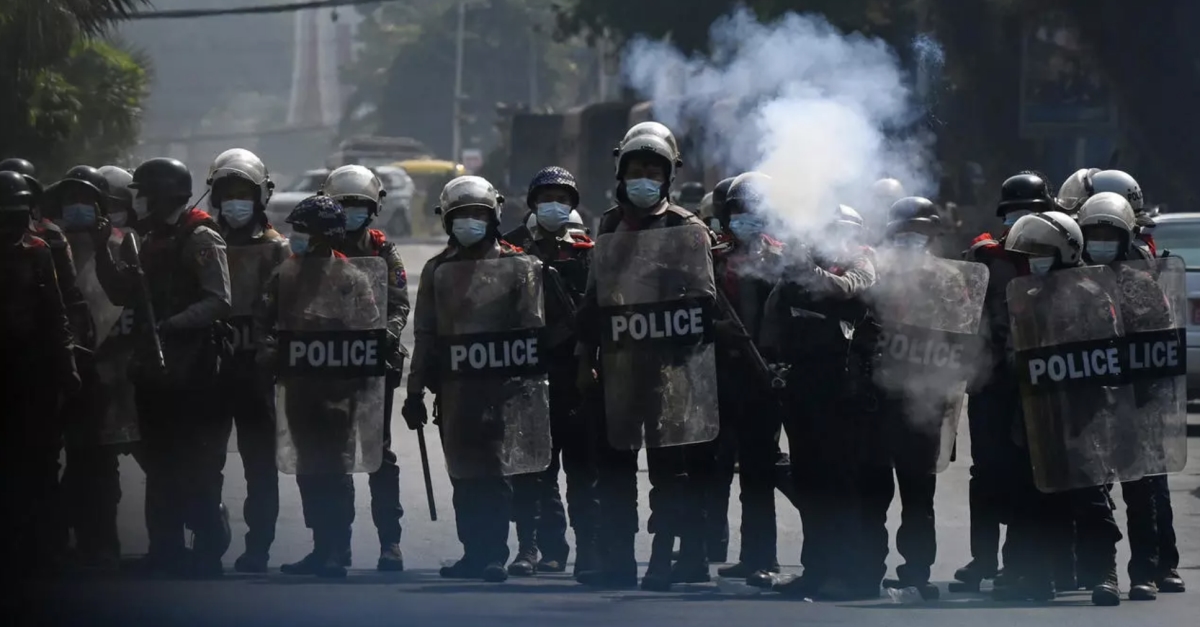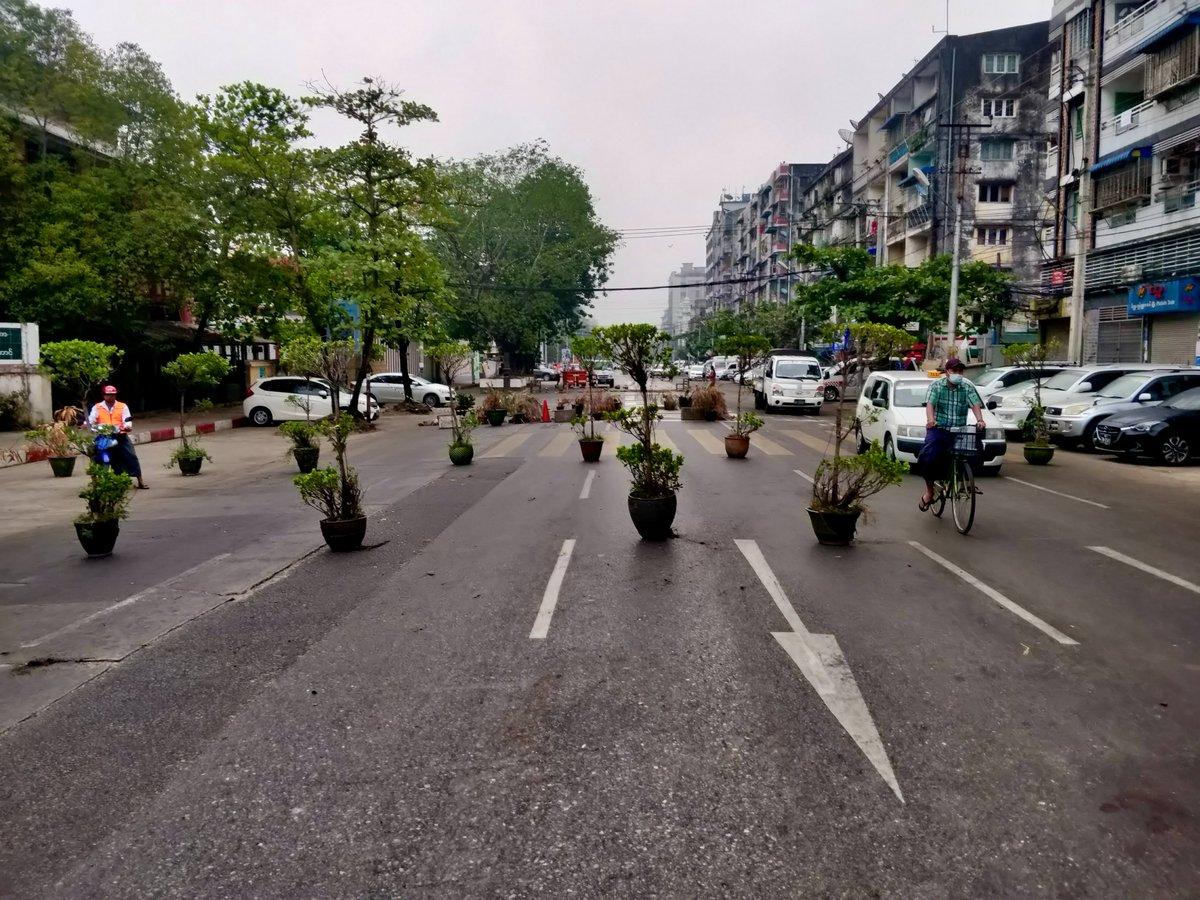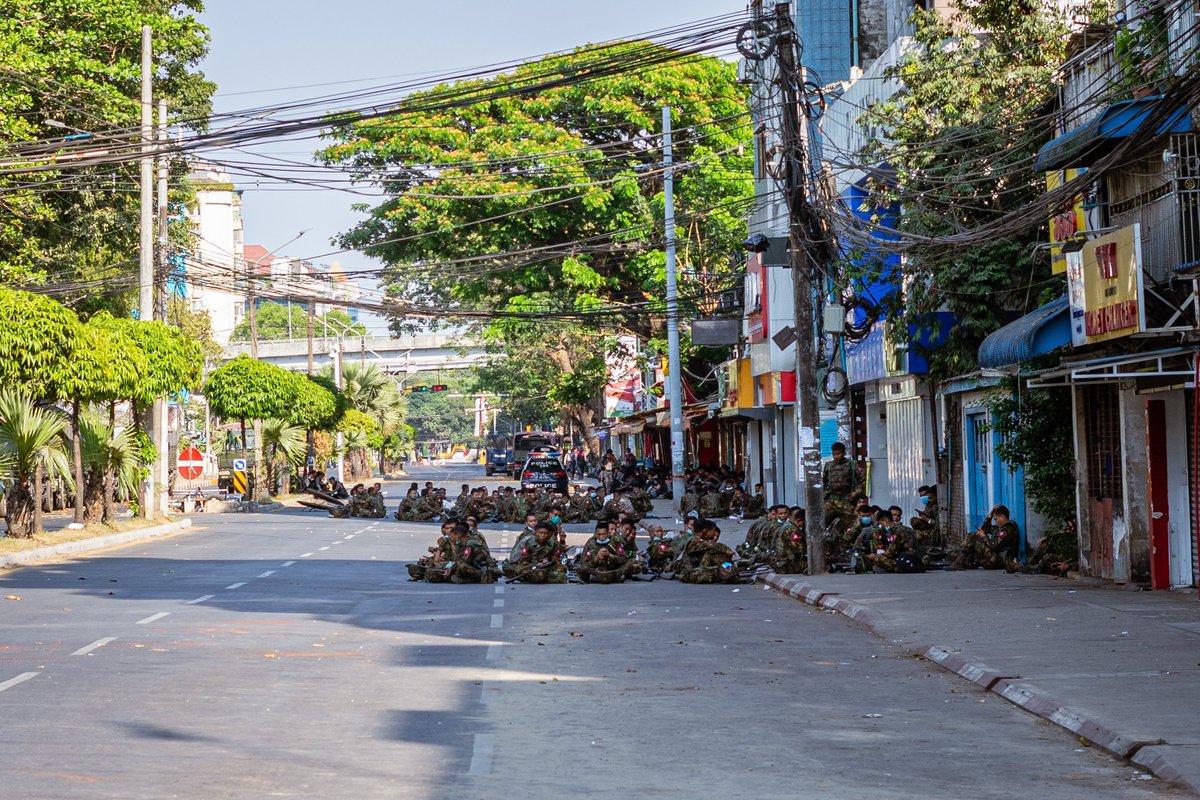
Smoke, rubble and gunshot wounds have conjured images of Yangon neighbourhoods as “battlegrounds” this week, and though the term helps emphasise the severity of the situation, it can also be slightly misleading.
There are two sides – one, of course, comprising police, troops and in some cases, the navy. The other side is the majority of the public, who want the Myanmar military to reverse its power grab and restore the path to democracy.
While these security forces act as if they are battling another army of equipped soldiers, they are in fact attacking ordinary people of all ages that, unlike them, do not carry guns. Already today police have been filmed brutally beating a defenceless demonstrator as they make dozens of arrests and fire off shots.
In broad daylight, downtown streets have been closed off by police guards as unmarked civilian cars carrying troops drive to various addresses where they break in, attempting to make arrests and take possessions.
The Myanmar Mix team has witnessed first-hand this kind of harassment, which affected residents described as a means to impose terror on the population -- they are also quick to add that it isn’t working.
On Tuesday March 2 we recorded some details of the day to paint a brief description of life in Yangon right now. The morning was tense and eerily quiet in downtown, with neighbours looking proudly on their homemade barricades: pavement slabs, bins, and even plant pots.
Barricades would become more elaborate as the hours passed. Elastic bands wrapped around nails to burst tires. Thin wires stretched across roads. Bags of water for teargas and chilli sauce, which said a protester, could be thrown at police.
Then the police moved in – about 70 of them on Anawrahta Road, alongside a tractor to smash some barricades. The old rallying point near militarised City Hall was empty – a more common sight since security forces shot people dead. But neighbours chanted near their homes, ready to flee any potential violence.
This latest form of protesting has introduced more diversity to the protests. Older people more reluctant to join larger rallies came out. Students in hardhats, googles and thick gloves travelled to Sanchaung township, where security forces shot rubber bullets tear gas and stun grenade around noon.
More signs of support appeared for the elected #Myanmar politicians that labelled the regime a “terrorist” group. Yesterday the lawmakers who have formed the Committee Representing Pyidaungsu Hluttaw named four acting ministers – a growing parallel government that has inspired hope.
On Sanchaung Street, people darted between sandbags, saying security forces raided valuables from homes and teashops yesterday. A student who was carrying nunchucks said he would use them to defend himself if soldiers chased him into a house. Soldiers waited nearby.
Back in downtown, security forces marched from intersection to intersection, reportedly firing into the air to disperse crowds. Was it a display of force? An exercise in intimidation? Residents returned when they left. Barricades were repaired. Songs were sung. The troops had scratched the dictator’s face off the road and left the remants in piles. Was that the reason they had come?
Elsewhere reports of live rounds and critically injured in Sagaing and Mandalay regions. In the evening, parts of Yangon held candlelight vigils in rememberance of those who have lost their lives since the coup in the struggle for democracy.



